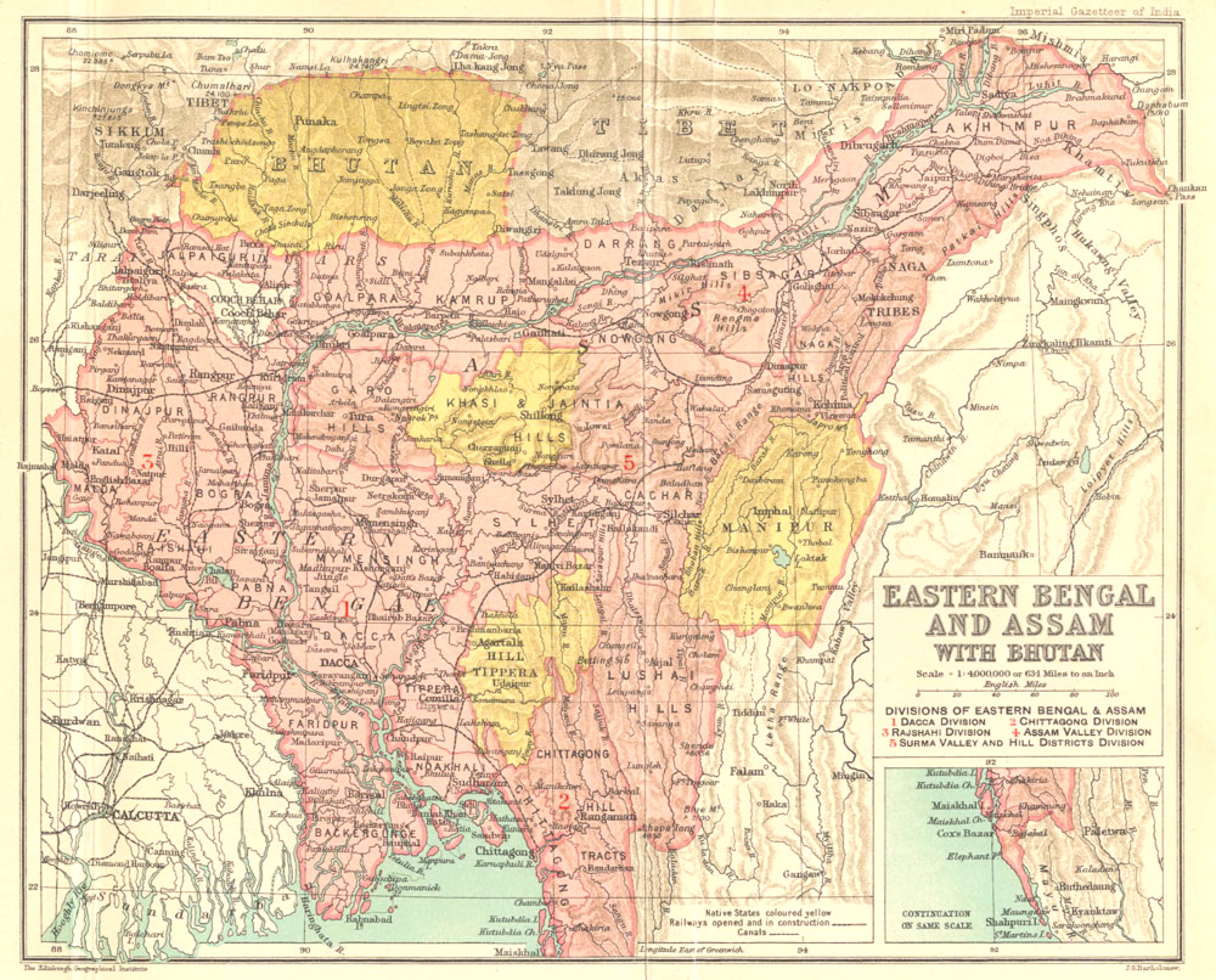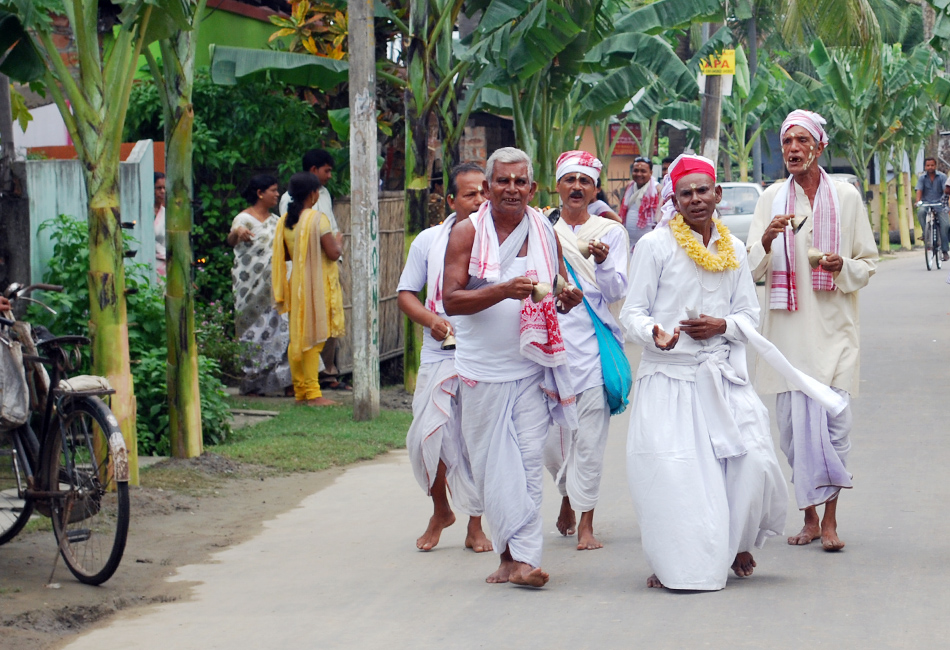|
Deodhani Dance
Deodhani dance ( as, দেওধনী নৃত্য) is a Shaman folk dance from the Indian state of Assam. It can be performed either solo or in a group. Deodhani is of Boro-kachari origin. A group performance of Deodhani generally consists of three or four women. The dance form is associated with the worship of the snake goddess Manasa or Marei/Maroi. A Deodhani dance is generally performed to the accompaniment of songs sung by an ''oja'', an Assamese traditional chorus leader, in the Darrang district.Oja-pali , WebIndia History  Deodhani is derived from two words – ''Deo'', which means God, and ''D ...
Deodhani is derived from two words – ''Deo'', which means God, and ''D ...
[...More Info...] [...Related Items...] OR: [Wikipedia] [Google] [Baidu] |
Shaman
Shamanism is a religious practice that involves a practitioner (shaman) interacting with what they believe to be a Spirit world (Spiritualism), spirit world through Altered state of consciousness, altered states of consciousness, such as trance. The goal of this is usually to direct Non-physical entity, spirits or Energy (esotericism), spiritual energies into the physical world for the purpose of healing, divination, or to aid human beings in some other way. Beliefs and practices categorized as "shamanic" have attracted the interest of scholars from a variety of disciplines, including anthropologists, archeologists, historians, religious studies scholars, philosophers and psychologists. Hundreds of books and Academic publishing#Scholarly paper, academic papers on the subject have been produced, with a peer-reviewed academic journal being devoted to the study of shamanism. In the 20th century, non-Indigenous Peoples, Indigenous Westerners involved in countercultural movements, ... [...More Info...] [...Related Items...] OR: [Wikipedia] [Google] [Baidu] |
India
India, officially the Republic of India ( Hindi: ), is a country in South Asia. It is the seventh-largest country by area, the second-most populous country, and the most populous democracy in the world. Bounded by the Indian Ocean on the south, the Arabian Sea on the southwest, and the Bay of Bengal on the southeast, it shares land borders with Pakistan to the west; China, Nepal, and Bhutan to the north; and Bangladesh and Myanmar to the east. In the Indian Ocean, India is in the vicinity of Sri Lanka and the Maldives; its Andaman and Nicobar Islands share a maritime border with Thailand, Myanmar, and Indonesia. Modern humans arrived on the Indian subcontinent from Africa no later than 55,000 years ago., "Y-Chromosome and Mt-DNA data support the colonization of South Asia by modern humans originating in Africa. ... Coalescence dates for most non-European populations average to between 73–55 ka.", "Modern human beings—''Homo sapiens''—originated in Africa. Th ... [...More Info...] [...Related Items...] OR: [Wikipedia] [Google] [Baidu] |
Assam
Assam (; ) is a state in northeastern India, south of the eastern Himalayas along the Brahmaputra and Barak River valleys. Assam covers an area of . The state is bordered by Bhutan and Arunachal Pradesh to the north; Nagaland and Manipur to the east; Meghalaya, Tripura, Mizoram and Bangladesh to the south; and West Bengal to the west via the Siliguri Corridor, a wide strip of land that connects the state to the rest of India. Assamese language, Assamese and Boro language (India), Boro are the official languages of Assam, while Bengali language, Bengali is an additional official language in the Barak Valley. Assam is known for Assam tea and Assam silk. The state was the first site for Oil well, oil drilling in Asia. Assam is home to the one-horned Indian rhinoceros, along with the wild water buffalo, pygmy hog, tiger and various species of Asiatic birds, and provides one of the last wild habitats for the Asian elephant. The Economy of Assam, Assamese economy is aided by w ... [...More Info...] [...Related Items...] OR: [Wikipedia] [Google] [Baidu] |
Solo Dance
A solo dance is a dance done by an individual dancing alone, as opposed to couples dancing together but independently of others dancing at the same time, if any, and as opposed to groups of people dancing simultaneously in a coordinated manner. Solo dancers are usually the best dancers in a group or dance school. Most solo dancers start after about 6–7 years of dance or sooner. Most soloists are company kids of their dance school. They are usually in more than one dance. In Comparsas, there are various soloists who strut in front. They usually dance at the edges of the street so that the viewing public can appreciate their moves. Most male soloists carry a large lantern-like artifact on a large pole, resting on an oily pouch, which they make spin at will. Dance is a way to express emotions. See also *Sean-nós dance * Sean-nós dance in America *Irish dance *Step dance *Stepping (African-American) Stepping or step-dancing (a type of step dance) is a form of Percuss ... [...More Info...] [...Related Items...] OR: [Wikipedia] [Google] [Baidu] |
Group Dance
Group dances are danced by groups of people simultaneously, as opposed to individuals dancing alone or individually, and as opposed to couples dancing together but independently of others dancing at the same time, if any. The dances are generally, but not always, coordinated or standardized in such a way that all the individuals in the group are dancing the same steps at the same time. Alternatively, various groups within the larger group may be dancing different, but complementary, parts of the larger dance. An exception to this generalization must be pointed out where groups of individuals are dancing independently of each other, but with the purpose of creating a "group" feeling or experience, such as might accompany various forms of ritual dancing. Group dances include the following dance forms or styles: * Folk dance ** Circle dance ** Contra dance ** English Country Dance ** Maypole dance ** Square dance *** Traditional square dance *** Modern western square danc ... [...More Info...] [...Related Items...] OR: [Wikipedia] [Google] [Baidu] |
Boro People
Boro (बर'/बड़ो ), also called Bodo, is the largest ethnolinguistic group in the Assam state of India. They are a part of the greater Bodo-Kachari family of ethnolinguistic groups and are spread across northeastern India. They are concentrated mainly in the Bodoland Territorial Region of Assam, though Boros inhabit all other districts of Assam and Meghalaya. Boros are officially listed as "Boro, Borokachari" scheduled tribe under the Constitution of India. Boros speak the Boro language, a Boro-Garo language of the Tibeto-Burman family, which is recognised as one of twenty-two Scheduled languages of India. Over two-thirds of the people are bilingual, speaking Assamese as second language. The Boro along with other cognate groups of Bodo-Kachari peoples are prehistoric settlers who are believed to have migrated at least 3000 years ago. Boros are mostly settled farmers, who have traditional irrigation, dong. The Boro people are recognised as a plains tribe in th ... [...More Info...] [...Related Items...] OR: [Wikipedia] [Google] [Baidu] |
Manasa
Manasa () is a Hindu goddess of snakes. She is worshipped mainly in Bihar, Bengal, Jharkhand, Lower Assam and other parts of northeastern India and in Uttarakhand, chiefly for the prevention and cure of snakebite, and also for fertility and prosperity. In Hindu mythology, Manasa is the sister of the first two naga kings, Shesha and Vasuki, and the wife of Sage Jaratkaru. She is the mother of the sage Astika. She is also known as ''Vishahari'' (the destroyer of poison), ''Nityā'' (eternal) and ''Padmavati''. In the Puranas, the sage Kashyapa is considered to be her father, one legend stating that she was created from his mind, and the other stating that she is his daughter from his wife, Kadru. In regional tradition, her myths emphasise her bad temper and unhappiness, due to rejection by her father, Shiva, and her husband, and the hate of her stepmother Chandi (Shiva's wife, identified with Parvati in this context). Manasa is depicted as kind to her devotees, but harsh tow ... [...More Info...] [...Related Items...] OR: [Wikipedia] [Google] [Baidu] |
Darrang District
Darrang () is an administrative district in the state of Assam in India. The district headquarters are located at Mangaldoi. The district occupies an area of 1585 km2. History No definitive records about Darrang are available for the pre-medieval period. According to Maheswar Neog, the Darrang became mentioned only after the uprising of the king Nara Narayan. It perhaps formed a part of the ancient kingdom of Kamarupa and with its decline, Darrang at different times might have been under the rule of the Chutia Kingdom, Bodo people and Baro-Bhuyans. In the 16th century, Darrang was subject to the Kamata king Nara Narayan, and on the division of his dominion among his heirs, Darrang became a part of Koch Hajo. Early in the 17th century the raja Bali Narayan invoked the aid of the Ahoms of Upper Assam against the Mughal invaders; after his defeat and death in 1637 the Ahoms dominated the whole district. About 1785 the Darrang rajas took advantage of the decay of the Ahom k ... [...More Info...] [...Related Items...] OR: [Wikipedia] [Google] [Baidu] |
Ojapali
Ojapali is a traditional shamanistic type of indigenous folk dance from Assam in the northeastern region of India. Ojapali is believed to have evolved from Kathakata tradition and is performed in a group; it is believed to be one of the oldest art forms of Assam. Originally evolved in the Kamata state the western and northern part of river Brahmaputra later limited to Darrang area under the patronisation of Darrangi King Dharmanarayana. The repertoire of this performance consists of songs, dialogues, gesture, improvised acting and dramatisation etc. The group consists of an Oja, who leads the performance and four or five palies, who supplement the performance with continuously playing cymbal. Among the Palies Daina pali who stand on the right-hand side of the Oja is the active one and he and Oja take the performance forward. Many believe that Shankardev took inspiration from Ojapali to create his Ankiya Bhaona. Moreover he also created his own Sattriya Ojapali. Generally Da ... [...More Info...] [...Related Items...] OR: [Wikipedia] [Google] [Baidu] |
War Dance
A war dance is a dance involving mock combat, usually in reference to tribal warrior societies where such dances were performed as a ritual connected with endemic warfare. Martial arts in various cultures can be performed in dance-like settings for various reasons, such as for evoking ferocity in preparation for battle or showing off skill in a more stylized manner. It could also be for celebration of valor and conquest. Many such martial arts incorporate music, especially strong percussive rhythms. War dances Examples of war dances include: :* Aduk-Aduk – Brunei :* Ardah – Arabian Peninsula, Kuwait :* Ayyalah – Arabian Peninsula :* Baris – Bali, Indonesia :* Bende War Dance – Nigeria :* Buza – Russia :*Blood walk – Bloods of United States :* Cakalele – Maluku, Indonesia :*Capoeira, as well as some similar Afro-Caribbean arts :*Cibi – Fiji :*Crip Walk – Crips of United States :* Dirk dance and Scottish sword dances – Scotland :* European sword ... [...More Info...] [...Related Items...] OR: [Wikipedia] [Google] [Baidu] |




